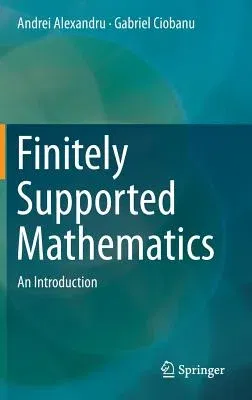In this book the authors present an alternative set theory dealing with
a more relaxed notion of infiniteness, called finitely supported
mathematics (FSM). It has strong connections to the Fraenkel-Mostowski
(FM) permutative model of Zermelo-Fraenkel (ZF) set theory with atoms
and to the theory of (generalized) nominal sets. More exactly, FSM is ZF
mathematics rephrased in terms of finitely supported structures, where
the set of atoms is infinite (not necessarily countable as for nominal
sets). In FSM, 'sets' are replaced either by `invariant sets' (sets
endowed with some group actions satisfying a finite support requirement)
or by `finitely supported sets' (finitely supported elements in the
powerset of an invariant set). It is a theory of `invariant algebraic
structures' in which infinite algebraic structures are characterized by
using their finite supports.
After explaining the motivation for using invariant sets in the
experimental sciences as well as the connections with the nominal
approach, admissible sets and Gandy machines (Chapter 1), the authors
present in Chapter 2 the basics of invariant sets and show that the
principles of constructing FSM have historical roots both in the
definition of Tarski `logical notions' and in the Erlangen Program of
Klein for the classification of various geometries according to
invariants under suitable groups of transformations. Furthermore, the
consistency of various choice principles is analyzed in FSM. Chapter 3
examines whether it is possible to obtain valid results by replacing the
notion of infinite sets with the notion of invariant sets in the
classical ZF results. The authors present techniques for reformulating
ZF properties of algebraic structures in FSM. In Chapter 4 they
generalize FM set theory by providing a new set of axioms inspired by
the theory of amorphous sets, and so defining the extended
Fraenkel-Mostowski (EFM) set theory. In Chapter 5 they define FSM
semantics for certain process calculi (e.g., fusion calculus), and
emphasize the links to the nominal techniques used in computer science.
They demonstrate a complete equivalence between the new FSM semantics
(defined by using binding operators instead of side conditions for
presenting the transition rules) and the known semantics of these
process calculi.
The book is useful for researchers and graduate students in computer
science and mathematics, particularly those engaged with logic and set
theory.

